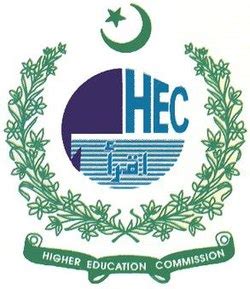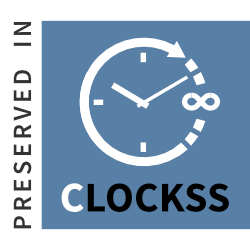Recognized in 'Y' category by HEC

Online ISSN: 2710-222X
Print ISSN: 2072-4659

NUST Journal of Natural Sciences (NJNS)
PAPER FORMAT
Paper General Requirements
The title page should contain
(1) Title of the article (not more than 200 characters), center justified. bold. "Times New Roman, 14 points"
(2) Name(s) of the Author(s), center justified. bold. "Times New Roman, 12 points"
(3) Information about the corresponding author, affiliation(s), addresses, left align "Times New Roman, 12 points"
(3) Abstract. 250-300 words Keywords 5
(4) Start of the main text, justified, "Times New Roman, 12 points".
The rest of the pages would contain the main text, Acknowledgements (if applicable). Appendices, References, Figures with captions, Tables with captions, justified, "Times New Roman, 12 points". All headings should be flushed with the left margin. "Times New Roman, 12 points, bold".
Editors reserve the right to adjust the style to ensure standards of uniformity. All texts should be submitted in Microsoft Word; no other format is acceptable.
Corresponding/main author
Please indicate clearly who is willing to handle correspondence at all stages of refereeing, publication, and post-publication. Please ensure that telephone and fax numbers are provided in addition to e-mail and postal address(es). Complete postal addresses must be given to all co-authors.
Abstract
The abstract should consist of about 250-300 words, describing the background, objectives, methods, and results. The format of the abstract is described under general requirements.
Introduction
Under this heading, please state the purpose of the article and summarize the rationale for the study. Please provide the relevant references only; do not include data or conclusions in this section.
Methods
Identify the method of investigation, relevance, and equipment used, with information about the model and manufacturer. Please also provide reference to the earlier work and enough details to allow subsequent investigations on the subject. Please specify the material, chemicals, raw material, chemical equations, process, and scientific justifications.
Results and discussion
The results should be presented in a logical sequence. Tables and figures should be numbered and inserted close to the point of discussion. The captions for tables should be sequentially numbered and placed at the top of the table, whereas the same should be placed below the figure. During the discussion, please emphasize new aspects of the study and the conclusions that follow from them. Link the conclusions with the goals of the study provided in the introduction. Please avoid statements that are not substantiated experimentally. The new hypothesis may be stated when warranted but used in association with appropriate recommendations.
Figures/Graphs
Figures should be at least 5megapixel. Graphs should be in jpeg format with prominent/readable write-up (12-14 points).
Acknowledgments
Those persons or organizations may be acknowledged who contributed physically or intellectually to the research. Technical help does not justify the authorship of the paper. It may be acknowledged in a separate paragraph.
Citation within the text:
References
References should be listed at the end of the paper, in the order in which they occur in the text. Cross references may be made within the text in case required. They should be indicated within the text by square bracket [2]. Examples:
Books: Ford HL, Sclafani RA, Degregori J. Cell cycle regulatory cascades. In: Stein GS, Pardee AB, editors. Cell cycle and growth control: biomolecular regulation and cancer. 2nd ed. Hoboken (NJ): Wiley-Liss; 2004. p. 42-67.
Dissertations/theses: Hincks CL. The detection and characterisation of novel papillomaviruses. Biomedical Science, Honours [thesis]. Murdoch (WA): Murdoch University; 2001.
Journal article: Geck MJ, Yoo S, Wang JC. Assessment of cervical ligamentous injury in trauma patients using MRI. J Spinal Disord. 2001;14(5):371-7.
Conference proceedings: Christensen S, Oppacher F. An analysis of Koza's computational effort statistic for genetic programming. In: Foster JA, Lutton E, Miller J, Ryan C, Tettamanzi AG, editors. Genetic programming: EuroGP 2002: Proceedings of the 5th European Conference on Genetic Programming; 2002 Apr 3-5; Kinsdale, Ireland. Berlin: Springer; 2002. p. 182-91.
Websites: Australian Institute of Health and Welfare. Chronic diseases and associated risk factors [Internet]. Canberra: The Institute; 2004 [updated 2005 Jun 23; cited 2005 Jun 30]. Available from: http://www.aihw.gov.au/cdarf/index.cfm.
References Management Software
For authors using Endnote, NJNS provides an output style that supports the formatting of citations and reference lists.
Figures and tables
Figures and tables should be typed as part of the text and must be separated from the text by a two-line space above and below the table in Microsoft Word. Please use the table option to create tables. The table should be inserted in the text close to the point of reference and the author(s) must make sure that a table does not run over to the next page. The captions for tables should be numbered sequentially and placed at the top of the table whereas the same should be placed below the figure.
Abbreviations and footnotes
Abbreviations should be defined when first used in the text but should not be used in the abstract. Abbreviations for instruments (e.g., SEM and TEM should not be used for methodologies, such as scanning electron microscopy and transmission electron microscopy).
Footnotes may be added at the discretion of the authors where additional definition, explanation, or acknowledgment is deemed necessary. Manufacturer citations of trade names, instruments, model numbers, and products unique to the study may be included in the text Footnotes will not be included in the reference list.
Units
Authors are encouraged to adhere to the basic SI system of units. If the use of SI units would hinder reader comprehension, then alternate metric units may be used. All data should then be given in metric units with a list of conversion factors used.
Submission of manuscript
The manuscripts must be submitted online by the designated corresponding author (one of the authors only). All papers should be submitted electronically according to the author's guidelines.
Open Access Policy
All articles published in the NUST Journal of Natural Sciences ISSN 2710-222X are published in open access. This journal provides immediate open access to its content on the principle that making research freely available to the public supports a greater global exchange of knowledge. All items published by the NUST Journal of Natural Sciences are licensed under a Creative Commons Attribution 4.0 International License.
Article Processing Charges (APC)
NJNS is a peer-reviewed, subsidized open-access journal for which the National University of Sciences and Technology, Islamabad, Pakistan, pays the open-access fee. Authors do not have to pay any article processing charges (APC).
Publication Frequency
This journal is published biannually.
Copyright Notice
In order to promote and guarantee maximum dissemination of the scholarly work being produced through the platform of NJNS and to maximize its impact, the copyrights are held by the authors. However, NJNS retains the right of first publication and other non-exclusive publishing rights. Condition of publication refers that manuscripts submitted to the journal have not been published and will not be simultaneously submitted or published elsewhere. Authors retain the right to use and share their published articles with others.
Privacy Statement
The names and email addresses entered in this journal site will be used exclusively for the stated purposes of this journal and will not be made available for any other purpose or to any other party.
Recognized in 'Y' category by HEC

Online ISSN: 2710-222X
Print ISSN: 2072-4659

NUST Journal of Natural Sciences is published at the Atta Ur Rahman School of Applied Biosciences, National University of Sciences & Technology (NUST) H12 Islamabad.
NUST Journal of Natural Sciences (NJNS) is licensed under a Creative Commons Attribution 4.0 International License.